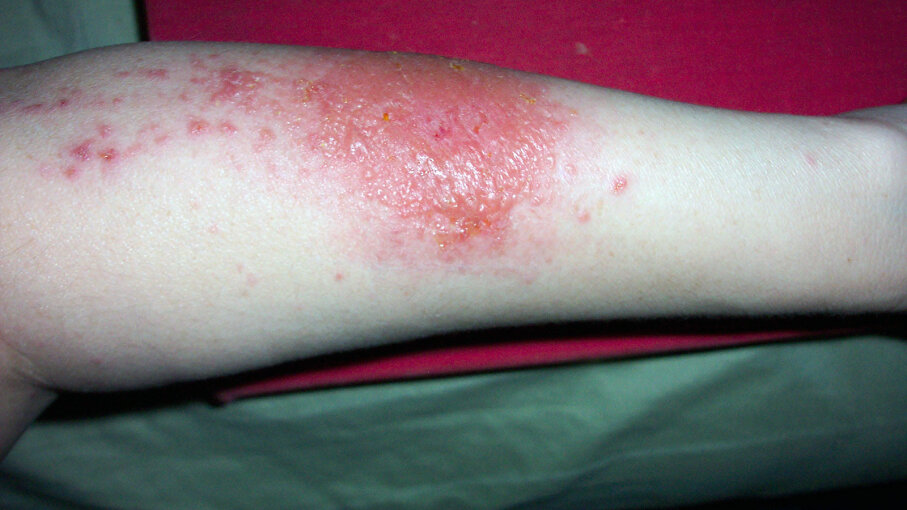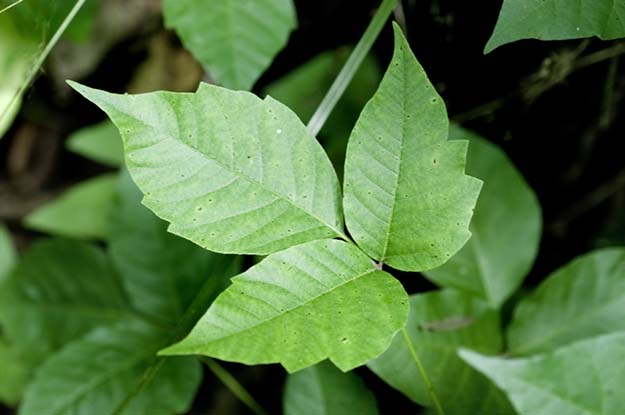Table of Content
Someone will almost certainly have another reaction if he or she comes in contact with these plants again after a first reaction. Before going into a potentially infested area, apply nonprescription products such as Ivy Block or Stokoguard, which act as a barrier to the oils. Return to a doctor if the symptoms do not begin to improve in two weeks. Burow's solution can be applied as a compress to blisters to help relieve skin irritation. Do not attempt to drive; call 911 for emergency medical treatment. If someone has swelling of the face and throat or difficulty breathing, feels dizzy or faint, or loses consciousness, he or she may be having an anaphylactic reaction.

Be prepared, though, because the vinegar might make your skin sting a little when you first apply it. Some people recommend soaking a paper bag in the vinegar first, then applying the bag to the itchy areas. You can reapply the vinegar as many times throughout the day as you need to to keep you from scratching and prolonging your skin’s heal time. If you know you’ve come into contact with poison ivy, poison oak or poison sumac, take a shower to wash off the resin. You won’t be able to get it all — after 10 minutes of washing your skin, only about 50% of the urushiol resin comes off — but you can lessen its impact.
What Is the Medical Treatment for Poison Ivy, Oak, and Sumac Rash?
More than half the people in the United States are sensitive to poison ivy, poison oak, and poison sumac. If an individual is sensitive, he or she can develop an itchy, blistering rash by coming into contact with these plants. Pictured are the distinctive leaves of poison ivy, poison oak, and poison sumac.

Poison ivy strikes again — or maybe it’s poison oak or poison sumac, as all three plants contain the same oily, allergy-inducing sap called urushiol. An estimated 50% to 75% of the population is allergic to urushiol, which is found in every part of the plant, including the fruit, leaves, stem, and root. You may be able to reduce symptoms of poison oak rash with several treatments. These include over-the-counter and prescription medications, as well as home remedies. The rash caused by poison ivy, oak, and sumac is an allergic skin reaction to an oil called urushiol that is inside the plant.
Are there any home remedies for a poison ivy, oak, or sumac rash?
Soaking a cotton ball in chilled water will also do in cold compress for rashes from Poison Oak leaves. For a more longterm solution, brew green tea or black tea quite strongly. Pour the liquid in a bottle and put it inside freezer till it chills. You can replace water cold compress with any of these two beverages. Also try out German Chamomile and Roman Chamomile essential oils for poison Oak/Ive rashes.

Thoroughly wash all of the clothes you were wearing when you came into contact with the poisonous plant. The oil can stick to clothing, and if it touches your skin, it can cause another rash. Whether your itchy rash is from poison ivy, oak, or sumac, you've got plenty of choices to get relief.
6 DIY Tips for Watering Your Houseplants While Away on Vacation
MedTerms medical dictionary is the medical terminology for MedicineNet.com. Our doctors define difficult medical language in easy-to-understand explanations of over 19,000 medical terms. MedTerms online medical dictionary provides quick access to hard-to-spell and often misspelled medical definitions through an extensive alphabetical listing. You can gently apply pieces of cucumber to the affected areas or even make a paste out of the smaller slices. You can only try this one if you happen to get poisoned near the sea. If you want to maximize your exposure, you need to engage users where they are at!

Allow it to wear off or rinse it off with cold water after an hour or so. Apply the paste over the rash and allow it to dry in place. Leave it in place and allow it to dry on its own and then rinse it off later with warm water. Allow it to cool a few minutes and apply it to the affected area while it is still warm. This plant grows like shrub with 7-14 leaves as a pair on its stems.
Your skin absorbs this allergen when you touch the plant. It's also important to know what medications don't work for poison ivy, oak and sumac. Anything that you rub on your skin that is supposed to stop itching, such as a topical antihistamine, does not help to decrease itching caused by these plants. Serious complications from poison ivy, oak, and sumac dermatitis are rare. The most common complication is the development of bacterial infections at the site of the rash due to breaks in the skin caused by repeated scratching. Bacterial infections of the skin may require antibiotic treatment and in rare cases may spread to other areas of the body.
You can also inhale it from smoke if the plants are burned. Urushiol can stay active on any surface for a year or more and still cause skin rash. But you can spread the oils around your body without knowing it. The first time you touch one of the plants, you may not get a rash. This is because your body’s allergic response is not yet sensitive to it.
Contact dermatitis treatment may involve creams, application of cool water compresses, and applying topical steroids. The diagnosis of this rash is typically made by a healthcare professional after obtaining a thorough history and performing a detailed exam of the skin. While some individuals will know and report exposure to poison ivy, oak, or sumac, others may not be aware of it and may not recall any exposure. Poison ivy, poison oak, and poison sumac are plants that can cause a rash if individuals come in contact with the oily resin found in them. As with the Himalayan crystal salt remedy, Epsom salts dry out the blisters of a poison ivy rash.

The leaves of this plant have black and brown spots which later turns into red, yellow and pinkish when the season changes. Carefully remove these plants if they are growing near one's home. Learn to recognize these plants in order to avoid contact with them. Directly place cold tea bags into the infected parts or you can also secure it with a tape. Directly apply vodka on the infected area and let it air dry. Apply this paste to the affected area for about 15 minutes and wipe off.
No comments:
Post a Comment